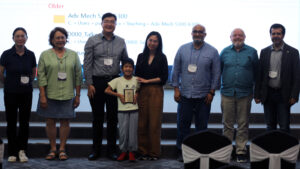
Assistant Professor Pai Wang from the department of mechanical engineering at the University of Utah was recognized with the 2025 Phononics Young Investigator Award at the International Conference on Phononic Crystals/Metamaterials, Phonon Transport, and Topological Phononics. This award recognizes early-career researchers who demonstrate excellence in the field.
The field of Phononics is the study of “phonons”, which represent mechanical vibration and acoustic waves according to the particle-wave duality of modern physics. It deals with the control, manipulation, and transport of heat and sound energy at the microscopic or nanoscopic level using phonons. It offers challenges in fundamental mechanics and also a wide-range of other applications.
“I am excited that our research contributions at the U are recognized by the research community,” said Dr Wang. “I am very grateful to the International Phononics Society Committee for this honor and hope our ideas may inspire more scientific advances and technological innovations.”
Dr Wang is the director of the Utah Waves and Architected Materials lab, where they are currently focused on three areas of research. First, Controlling mechanical vibrations for high-efficiency energy production, transmission, and consumption. Second, improving the precision of acoustic diagnostic and therapeutic apparatuses for accurate and cost-effective medical instruments in healthcare. Third, mitigating the detrimental effects of ambient noise and structural vibrations in urban living environments.
“We believe that our research work in each of these areas can lead to far-reaching societal impacts,” said Dr Wang. “We look forward to continuing to push our research forward and find ways for our research to improve everyday life.”
You can learn more about Dr Wang’s research and the Utah Waves & Architected Materials lab through their publications.